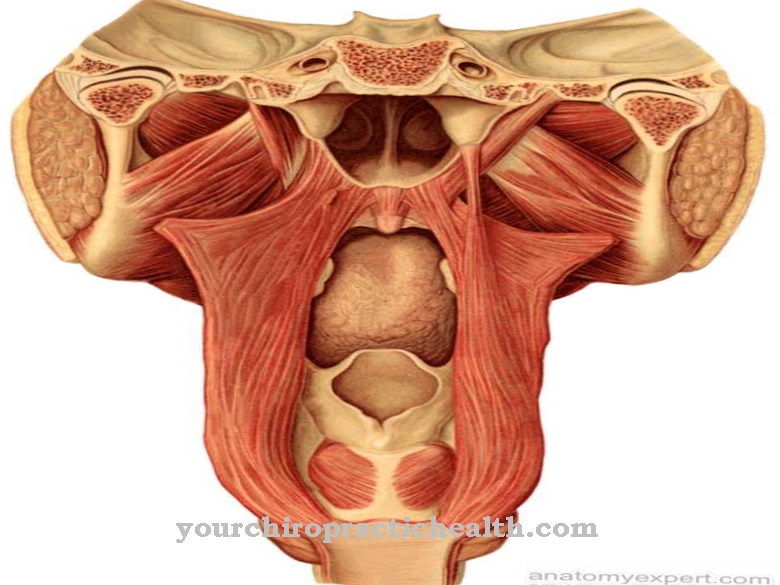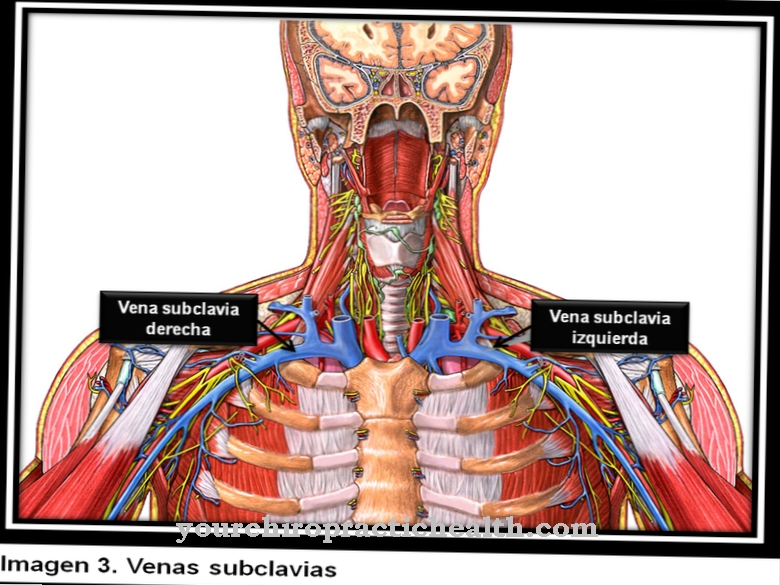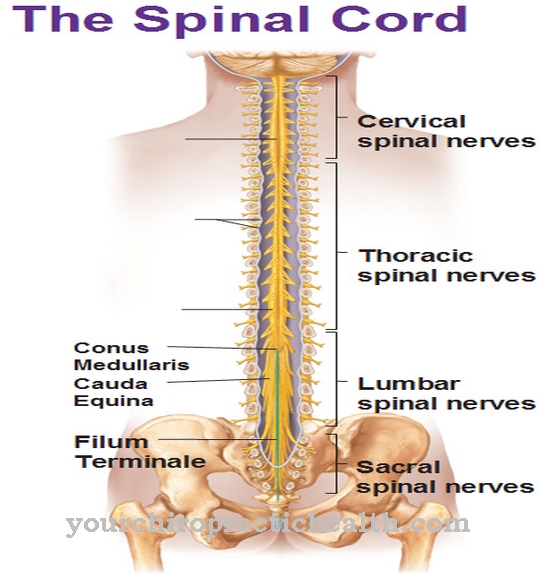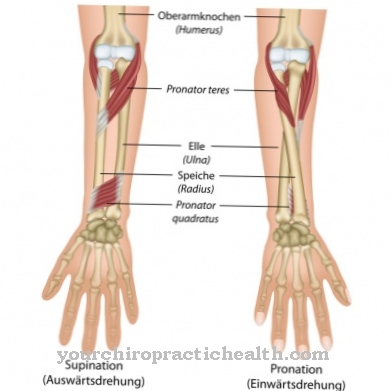Of the auditory cortex lies in the cerebral cortex and is responsible for processing and absorbing acoustic stimuli. He is also called Auditory center or Auditory cortex designated. It can be found on the upper turns of the temporal lobe in the cerebrum. The hearing center is roughly the size of a thumbnail. It is also the end point of the so-called auditory nerve tract. There are the primary and the secondary auditory cortex, which are concentric with each other.
What is the auditory cortex?
The primary auditory cortex is made up of two to four transverse turns of the brain. Recorded sounds of all kinds are processed here. This is crucial for the sensory quality of human hearing.
Both the pitch and volume are verified in the primary auditory center. For example, the shrill sound of a police siren is distinguished from the dull sound of a drum. Based on this, the secondary auditory cortex is able to absorb and implement more complex stimulations of what is heard. He can put the words, sounds and melodies together sensibly and compare them with already known sensory information.
Anatomy & structure
An auditory cortex is assigned to each side of the brain. In this way, signals from the left and right ears can be processed. The tones of neighboring frequencies are also recognized by neighboring neurons in the brain.
This so-called tonotopic structure of the auditory cortex works in principle like a keyboard. High tones are received on one side and low tones on the other. Overall, the human brain is equipped with around 100 billion neurons (nerve cells). Due to its diverse tasks, the brain requires around 15 percent of the total energy requirements of the human body. The hearing center in the brain constantly compares incoming noises with what is already known and classifies them accordingly. In addition, previously unknown auditory stimuli are registered continuously, for example sudden loud noises or speech signals from a conversation partner.
The respective secondary auditory cortex of the two hemispheres function differently. One of the two hemispheres, usually the left, is dominant. In it what is heard is processed rationally. The sensory language center (Wernicke center), which enables language understanding, is located in the left auditory cortex. The incoming signals are then processed holistically in the non-dominant auditory cortex. This process is important in order to be able to understand and feel music, for example. The connection between the primary and secondary auditory cortex is also important for the combination of what is seen and heard.
In the Wernicke Center, both heard and read language is processed. This information then goes to the higher quality areas of the hearing center. In the motor language center there, language is provided with adequate movement.
Function & tasks
The auditory cortex comprises eleven previously known auditory fields, each of which is responsible for different sound frequencies. The possibility that other such fields exist cannot be ruled out, but so far only a guess. However, the brain can also be mistaken when, for example, it supplements missing information with empirical values or details that appear logical. This is where the concept of soul deafness comes from: some people are able to perceive noises, but cannot interpret or classify them.
On the other hand, silent mouth movements that can only be recognized visually can stimulate the auditory center and bring it to increased attention. The reputation of a speaker's speech can also significantly improve hearing performance. Feeling or touching objects also increases the activity in the hearing center. Electrical signals are the source of all hearing. They are sent to the auditory nerves by the fine hair fibers of the cochlea in the inner ear. They are then passed on as impulses to the auditory center of the brain.
There they are received by countless groups of nerve cells and translated for processing in the brain. In this way, very specific tones can be consciously perceived. When what is heard reaches the brain, a reflex is first triggered, which may trigger a sudden physical reaction. That depends on the intensity of the stimuli received. The tone is only then consciously recognized in the auditory cortex. Various other areas of the brain play a role in this. The corresponding so-called voluntary reaction then only follows the classification of the tone or tones.
You can find your medication here
➔ Medicines for ear complaints and hearing problemsDiseases
The primary auditory pathway is the crucial nerve cord of hearing, in which the processing of the decoded sound supply begins. The messages travel along this path to the temporal lobe, precisely into the auditory cortex.
The first station on this path is the brain stem, which breaks down the transmitted signals according to duration, strength and frequency. You are then prepared for a motor reaction of the body in the thalamus (the "hill of vision"). The thalamus sits on the trunk of the cerebrum and is networked with the sensory apparatus of the human organism. The complex signal is then stored in the hearing center and given an answer (the reaction). In addition to the auditory center, the temporal lobe also contains so-called associative areas that are important for language processing and memory formation.
In addition to the primary, non-primary auditory pathways also record a wide range of sensory information. These first turn to the sensory message that is most important to process. For example, if a person reads the newspaper and watches television at the same time, the non-primary auditory pathways allow one to focus on the more significant of the information received or the more important of the two simultaneous activities. The selected messages also arrive in the thalamus, which transmits them to sensory centers in the cerebral cortex.
























.jpg)



